Day 1 Shanghai → Qatar/Dubai
All day
Today is the gathering day for the event. Tourists from all over the country will gather at the terminal of Shanghai Pudong International Airport at around 8:00 PM (the specific time is subject to the tour book). They will check in under the guidance of their tour leader, and after completing the departure procedures at the designated time, they will take an international flight to the "northern tip of the African continent" to explore the real location of "Casablanca" - Casablanca.
Flight information for September 25th to October 7th
First outbound leg: September 26, Qatar Airways QR871 from Shanghai Pudong International Airport Terminal 2 (PVG) to Hamad International Airport (DOH)
00:35 (Beijing time) - 04:40 (Doha time) (flight duration approximately 9 hours and 35 minutes)
Second outbound leg: September 26, Qatar Airways QR1395 from Hamad International Airport (DOH) to Mohammed Airport Terminal 1 (CMN)
08:25 (Doha time) - 14:20 (Morocco time) (flight duration approximately 7 hours and 55 minutes)
First leg of the return trip: October 6, Qatar Airways flight QR4566 from Mohammed Airport Terminal 1 (CMN) to Hamad International Airport (DOH)
14:10 (Morocco time) - 23:35 (Doha time) (flight duration approximately 7 hours and 25 minutes)
Second leg of the return trip: October 7, Qatar Airways flight QR870 from Hamad International Airport (DOH) to Shanghai Pudong International Airport Terminal 2 (PVG)
02:15 (Doha time) - 16:20 (Beijing time) (flight duration approximately 9 hours and 5 minutes)
Free checked luggage of 23kg/person, 2 pieces per person, no more than 23kg per piece; free hand luggage of 7kg/person, 1 piece per person

Day 2 Qatar/Dubai → Casablanca
All day
Arrive at the northern tip of the African continent in the afternoon and explore Casablanca, the true setting of the film "Casablanca." Afterward, you'll be picked up at your hotel and head to the Hassan II Mosque (exterior view), featuring close-up and distant views, cultural artifacts, and sunset and illuminations (weather permitting). One-third of the mosque is built over the sea, commemorating the Arab ancestors of Morocco who arrived by sea. The entire mosque can accommodate 100,000 prayers simultaneously, making it the third largest in the world! It undoubtedly serves as a reminder of its glorious past.
After the filming, we went to stay at a local hotel in Casablanca.


Day 3 Casablanca → Essaouira
All day
After breakfast, we will depart for Essaouira, a charming town on Morocco's Atlantic coast. Essaouira means "picturesque" in Arabic. It may not have the best beaches in Morocco, but it does have a very famous wind.
Upon arrival in Essaouira, check into your hotel and then head to the Old Town for lunch. After lunch, you can explore the Old Town on your own, taking in the local culture and taking in the maze of local neighborhoods, the intricate alleyways, the tranquil squares, and the art workshops. Return to your hotel at your own convenience.
In the evening, we will gather at the hotel and go to the port to freely photograph the sunset. The picturesque castle and turrets, the bustling fish market at the pier, and countless seagulls together constitute the so-called "No. 1 sunset in Morocco", which is absolutely fascinating.


Day 4 Essaouira → Marrakech
All day
After breakfast, depart for Marrakech, the sleepless city, and check into your hotel upon arrival.
A good time to visit the Yves Saint Laurent Private Garden for photoshoots. The garden is awash in the painter's beloved blue, found everywhere from the villa, vases, walls, and even the pool. This enchanting shade of blue, like a breath of cool air amidst the sweltering heat, instantly refreshes the senses. This blue has been dubbed Majorelle Blue. The garden also boasts over 200 rare plants from around the world, including bougainvillea, cacti, yucca, water lilies, jasmine, and more.
Then, head to the "Sleepless Square" for photo opportunities: We'll have the opportunity to see Indian snake charmers (some poses in the square require a tip), Arabs selling spices and tea, Moroccan elders telling stories and fortunes, various street performers, and countless stalls selling food, drinks, clothing, carpets, furnishings, leather goods, and handicrafts. It's like Hong Kong's Lan Kwai Fong or Shanghai's Xintiandi. Because of this square, Marrakech is filled with endless vitality, and we can freely explore the streets and do some shopping!


Day 5 Marrakech → Ait Benhaddou/Ouarzazate
All day
After breakfast, depart for Ait Ben Haddou, a renowned ancient city in Morocco and a UNESCO World Heritage Site nestled in the desert. This beautiful, historic village, once a vital gateway in ancient times, remains exceptionally well-preserved. Designated a UNESCO World Heritage Site in 1987, it boasts a stunning setting. Crossing the Atlas Pass, approximately 2,260 meters above sea level, the ancient city stands proudly atop a golden hill, offering panoramic views. Beyond the city walls, a precious shallow stream nourishes the surrounding greenery. Within, a staggered interplay of traditional Moroccan square towers creates a breathtaking spectacle. Built using Moroccan terracotta mud bricks, the ancient city offers a truly breathtaking experience of Morocco's vibrant red. Over twenty international films have featured this city as a backdrop, including classics like "Lawrence of Arabia" and "Bodyguard."
At dusk, China-TravelNote arranged a special photoshoot for the Ahwach Ouarzazate dance, a traditional dance originating in the Ouarzazate region. It is performed during special occasions and celebrations, such as weddings and festivals, and typically involves a group of musicians playing traditional instruments such as drums, flutes, and stringed instruments. Dance is an important part of Amazigh culture, often used as a way to pass on stories, history, and traditions from generation to generation.
Then, depending on the hotel situation, proceed to Ait Benhaddou or Ouarzazate B&B.
Note 1: Due to limited accommodation conditions in Ait Benhaddou/Ouarzazate, China-TravelNote has selected better local B&Bs. Please understand that the hotel facilities are generally average.
Note 2: The conditions of the B&B in Ait Ben Haddou Village are limited and cannot be compared with hotels in big cities. There is often uneven hot and cold water in washing, and the bathing conditions are relatively limited. If you mind, it is recommended not to wash on the same day and just wipe it simply. Please understand!


Day 6 Ait Ben Haddou → Merzouga
All day
Get up early and drive to Merzouga, the famous gateway to the Sahara Desert. The Sahara here is famous for its sand dunes of various shapes. It is also famous for its unique sunrises and sunsets, which show different beautiful colors such as gold and pink as the natural light changes. It has become the most unique desert scenery in Morocco and the Sahara in the dreams of countless people!
After arriving in the afternoon, we will [ride camels] to the sand dunes of the Merzouga region [to photograph the desert sunset]. In the evening, we will admire the endless starry sky. Using various reference objects as the foreground, we can freeze the magnificent interstellar world and experience a unique Sahara creative journey (subject to weather conditions).
Note 1: Starry sky photography is a complimentary service and is subject to weather conditions. If it is a full moon day, light painting will be arranged. Please note that there will be no refunds if you cannot participate due to weather or personal reasons.
Note 2: The room types of B&Bs around the Merzouga Desert vary, and the facilities are average. There are not many B&Bs to choose from around the desert, so please understand.


Day 7 Merzouga → Fez
All day
Early this morning, the tourists departed from their hotel. China-TravelNote arranged a special off-road vehicle ride to the Merzouga dunes to capture the sunrise and the most beautiful moments of the Sahara. We then left the Sahara and crossed the Atlas Mountains, winding through valleys and cliffs, taking in the breathtaking natural scenery along the way.
After a long drive, we arrived at Fez, a famous tourist destination, religious and cultural capital of Morocco, and then checked into the hotel to rest. (Please note that the drive was quite long that day)


Day 8 Full day photography in Fez
All day
After an early breakfast, before all shops open, we set off for a photo tour of the old town of Fez. This medieval city was named one of the "10 Most Romantic Cities in the World" by the renowned American magazine "TRAVELER" and was designated a UNESCO World Heritage Site in 1981. Here, it feels like stepping back a thousand years, when donkeys were still the primary means of transportation, and the rich, original atmosphere permeates every corner.
First, we visited the Leather Dyeing Workshop, a place with nearly a thousand years of history. Morocco's leather industry is renowned and a popular tourist attraction. We then strolled to the nearby Bou Inania Medersas, a well-preserved institution in Fez, boasting both quaintness and unique character.
Later in the evening, we will go to a high point outside Fez to take a panoramic photo of the "Millennium Ancient City" at dusk (depending on weather conditions), and then check into the hotel to rest.
Note: There are many attractions in the ancient city of Fez, and the order of the tour will be arranged according to the on-site situation!

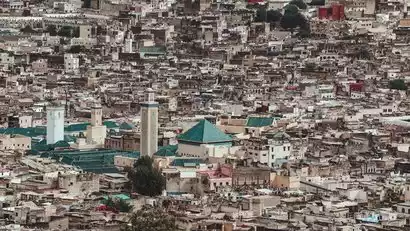
Day 9 Fez → Chefchaouen
All day
After breakfast at the hotel, we will head to Chefchaouen, the “Blue Town” of Morocco.
En route, we'll first visit Volubilis, a partially excavated Roman city known as the "Palace of the Pharaohs," inscribed on the World Heritage List in 1997. The city boasts a well-preserved triumphal arch and the white stone columns of its theater. Even the city's streets, residential buildings, oil mills, public baths, and marketplace are still clearly visible.
We then arrived at Chefchaouen, one of the world's three bluest cities. We leisurely walked through the city, stepping on the fine, irregular cobblestones. A fairytale world unfolded before our eyes. We ascended the steps through the arched earthen walls, where vast expanses of blue began to come into view, a bewildering, dreamlike atmosphere pervading the landscape. After a brief tour, we prepared to ascend the mountain to capture the vantage point.
Our theme today is to walk about 1.5 kilometers before sunset to the high point of the hillside where the small town leans, waiting to take pictures of the sunset or night view. There is a white mosque there, which is a good location to take pictures of the panoramic view and night view of the small town as the sun sets.
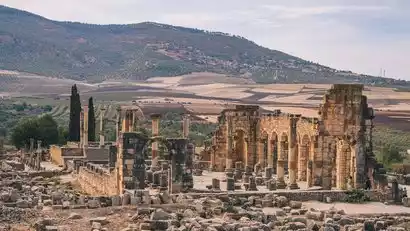
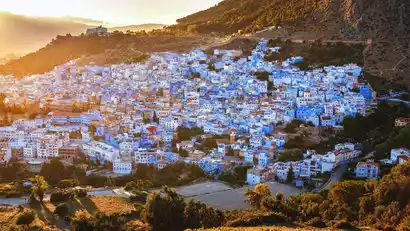
Day 10 Chefchaouen → Tangier
All day
After breakfast, we'll head back to Chefchaouen's old town in the early morning. It's said that Chefchaouen was originally painted blue to repel mosquitoes, but later, the people took it upon themselves to paint doors, steps, staircases, window sills, flower stands, mailboxes, and almost everything in sight. Blue has become a part of life here. China-TravelNote has specially prepared traditional Moroccan costumes as props (one for the tour leader to wear and for everyone to photograph). This is a special arrangement, as Moroccans can be camera-shy. Please be polite and capture some of the old town's vibrant atmosphere: elderly women sweeping the floor, merchants holding open their shops, and the residents rushing about early in the morning.
After lunch, we left Chefchaouen and headed to Tangier, the location of the North African fortress "Strait of Gibraltar", to take pictures of the famous [African Cave], and then stood on the Atlantic coast, facing the endless Atlantic Ocean.
We'll visit Cape Spartel Lighthouse to witness the wonders of Morocco—the Atlantic Ocean on the left and the Mediterranean Sea on the right, where you can see the two distinct colors of water blending together. After the tour, we'll check into our hotel and rest.
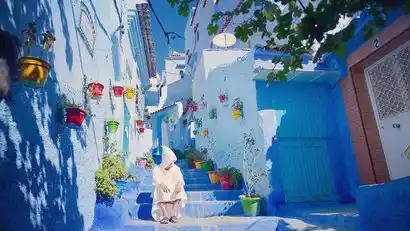
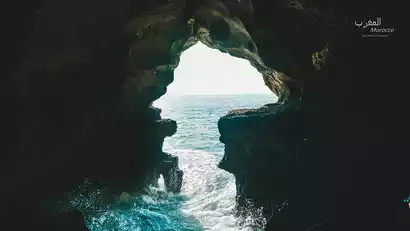
Day 11 Tangier → Asilah → Rabat → Casablanca
All day
After breakfast, we'll drive to Asilah, a town steeped in Moroccan art. Asilah's houses are predominantly white, and its narrow but immaculate medina alleys are adorned with beautiful murals and vibrant blocks of color, creating a quintessential Mediterranean atmosphere. Strolling through the area feels like wandering into a painting. In 1978, two local artists proposed creating a space that could serve as a backdrop for all forms of artistic expression. They invited 11 artists to paint murals on the walls of the old city. Subsequently, numerous romanticists, poets, photographers, and filmmakers from around the world flocked to exhibit their work, transforming Asilah into a mecca for art.
Inside the old city of Asilah, a bastion protrudes over the beach, forming a natural balcony. The sea crashes against the rocks, rolling in in waves, creating a rumbling sound. Grabbing my camera, I captured the murals on the walls of the old city, the doors of the residents' homes, and the people and events I encountered, all of which were unexpected.
Leave at the right time and visit the Kasbah of the Oudayas, the filming location of "Mission Impossible 5". It is also known as the "Blue and White Town of Rabat" and you can personally record the vast beauty of the Atlantic Ocean.
Afterwards, proceed to Casablanca and check into the hotel for rest.
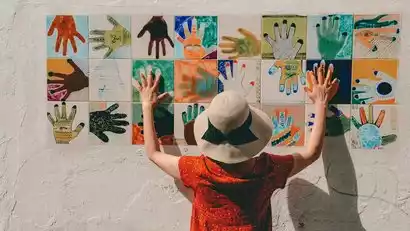
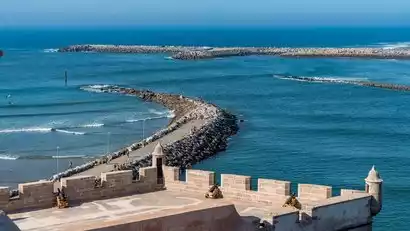
Day 12 Casablanca → Qatar/Dubai
All day
After breakfast, we'll visit the Hassan II Mosque, the third largest mosque in the Islamic world. One-third of its area is built on the sea, featuring a retractable roof and 25 automatic doors made of titanium alloy to resist seawater corrosion. The marble floors are heated year-round, making it one of the most modern mosques in the world. We'll then drive to the airport for our return trip.
Notes for visiting Hassan II:
Photography restrictions: Photography is generally prohibited inside mosques. This is out of respect and protection for religious sites. If you wish to photograph the exterior or courtyard of a mosque, you may do so from outside. Tripods are not permitted.
Code of Conduct: When visiting a mosque, please remain quiet and respectful. Refrain from making loud noises, smoking, or using mobile phones. Additionally, please follow the instructions and advice of mosque staff.
Tourists should note that the air conditioning inside the airport is very strong. Please bring suitable clothes. Please prepare the tax refund form for the tax-refundable items you purchased. Valuable items such as jewelry worth more than 5,000 yuan need to be presented. Please do not put them in your luggage to avoid trouble with the tax refund.
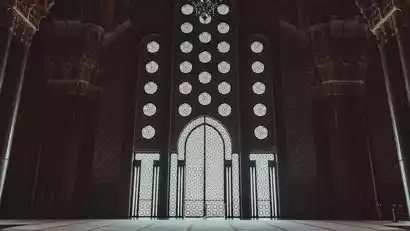
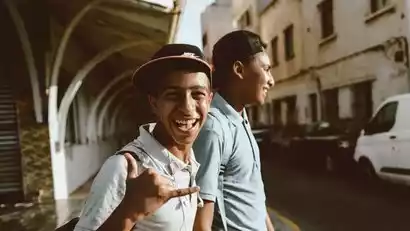
Day 13 Qatar/Dubai → Shanghai ★ Disbandment Day
All day
We disbanded upon arrival at Shanghai Pudong International Airport, and the group said goodbye to each other, concluding this joyful and fulfilling photography trip with tearful kisses! Remember to return and hand in your homework!






